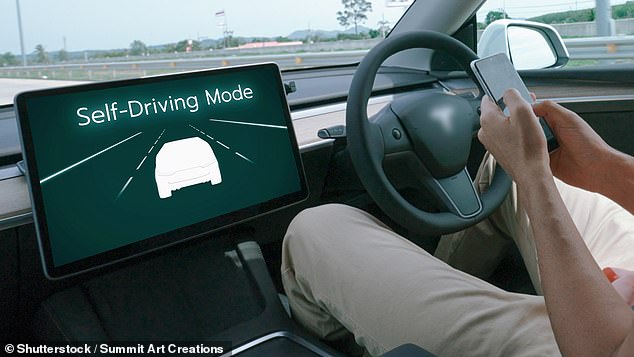Motorists will soon share the road with other self-driving vehicles.
With automated lane-keeping systems (ALKS) now approved for use on Britain’s motorways and the Automated Vehicles Act given Royal Assent earlier this year, vehicles with more advanced self-driving technology could arrive as early as 2026.
It will allow drivers to take their eyes off the road to perform different tasks, although rules will require them to take back control when asked to do so.
However, a new study has revealed that the first 10 seconds when humans are back in charge of cars will be the most dangerous, as it found that drivers behave more erratically during this period.
A new study has revealed that the 10-second period after a driver regains control of autonomous vehicle technology is potentially the most dangerous.
This is according to a New study by the University of Nottingham on behalf of the RAC Foundation, a road safety charity.
The behavior of 17 drivers, each accompanied by a front-seat passenger, was measured as they made a series of trips in a driving simulator programmed to represent an automated vehicle called “Level 3.”
ALKS is a component of Level 3 automation (there are six levels in total), meaning this technology is already in use in Britain.
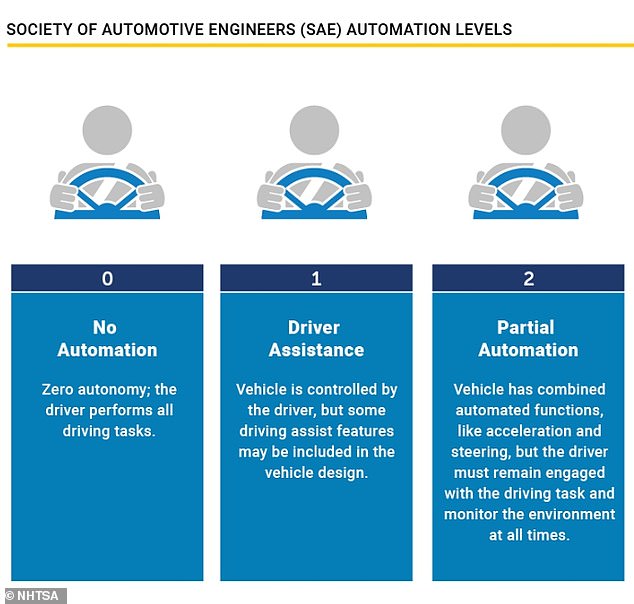
There are six levels of vehicle automation. Level 3 is currently the highest legally permitted on UK roads.
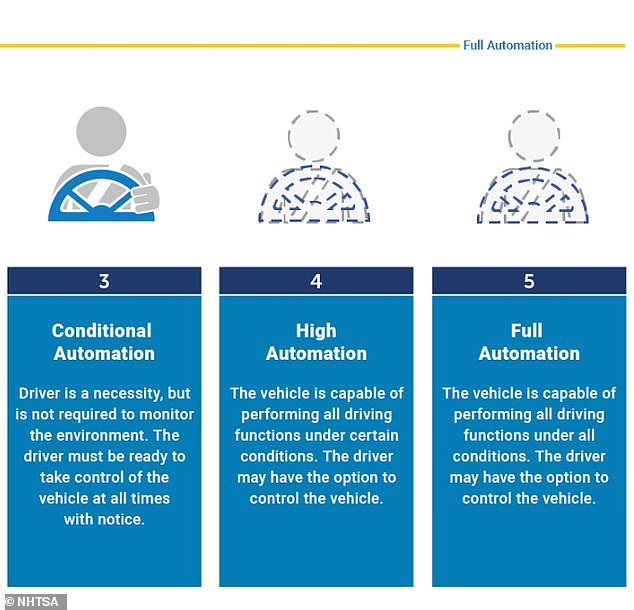
The Automated Vehicles Act could allow fully autonomous driving from 2026, ministers have said
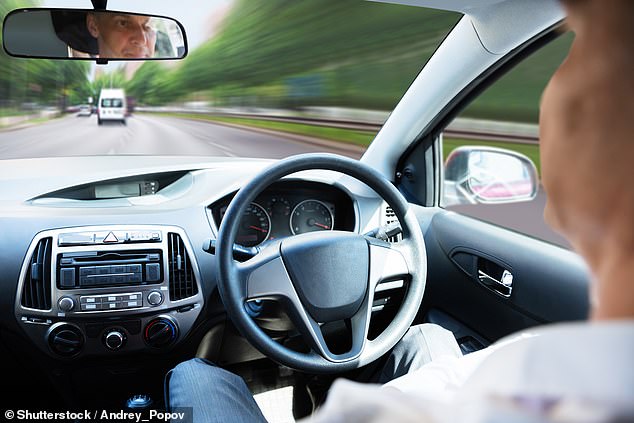
The Automated Vehicles Act has become law and will provide the legal framework for the safe implementation of autonomous vehicles in Britain within two years.
The researchers observed that “vehicle control during the ten seconds immediately following resumption of manual driving was generally poor for all participants.”
He added: “Drivers were seen braking and accelerating erratically and hesitating in their lanes immediately after regaining manual control of the vehicle.”
The study team believes that in some cases these exaggerated inputs on the pedals and steering wheel could have been a way for the driver to demonstrate to “his passenger that he was now in control.”
Responding to the findings, Steve Gooding, director of the RAC Foundation, said: ‘Unfortunately, this study, like those we commissioned previously, shows that the process of handover between humans and machines is anything but straightforward and far from rapid, raising serious questions about whether this type of intermediary technology will ever become commonplace, let alone secure.
‘Meanwhile, the transition to a world in which the car driver becomes a passenger at least part of the time raises important questions about the human-machine interface.’
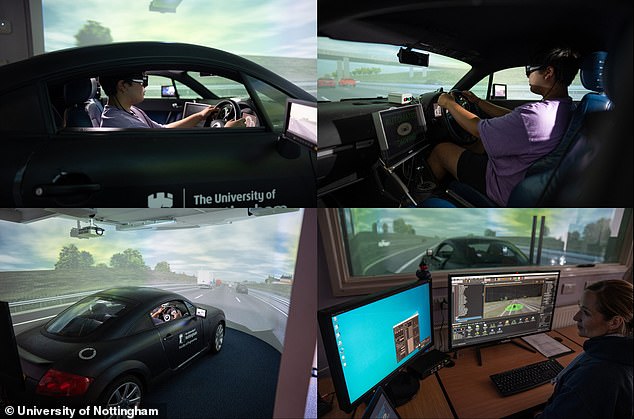
The research was carried out by the University of Nottingham on behalf of the RAC Foundation. 17 drivers (each with one passenger) were required to complete three routes using semi-autonomous technology.
Passengers in semi-autonomous cars could improve safety
Most studies conducted to test the effectiveness of autonomous vehicle technology rely on the driver being alone in the car, but this one is not.
Participants were asked to complete three different trips over three days, all with a passenger on board.
And the report found that having another person inside the vehicle could improve safety.
Its presence was found to “improve drivers’ concentration on the road and help them decide when manual control is necessary in autonomous vehicles.”
Having a passenger in the front seat also helped prevent drivers from falling asleep, the study says.
However, its presence also created more distractions during periods when the vehicle was driving on its own.
The occupants spent a lot of time chatting with each other and using their technological devices (mainly smartphones) and often showing each other the content.
Some couples watched movies together and even played online chess with each other while the car was running.
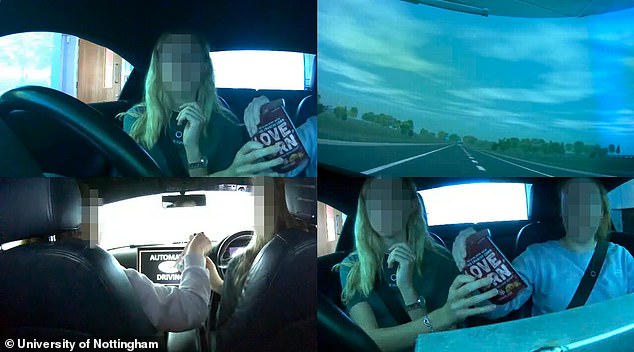
According to the study, having a passenger in the front seat helped prevent drivers from falling asleep.
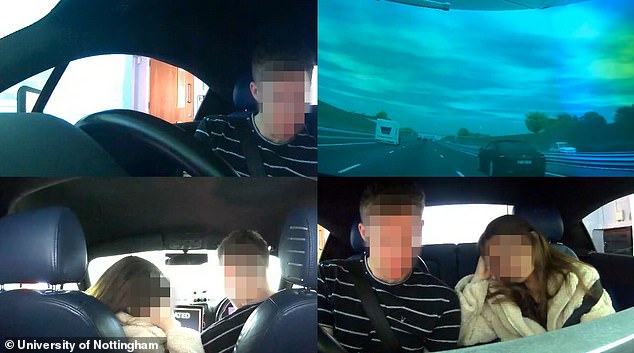
The presence of a passenger also led to more distractions during periods when the vehicle was driving itself. Occupants spent a lot of time chatting with each other and on their electronic devices (mainly smartphones), often showing each other content. One couple even played a game of chess online.
On more than one occasion (5 out of 17 cases), the couple was so engrossed in their activities during the autonomous portion of the route that they missed the predetermined highway exit.
Dr David R Large, Senior Research Fellow at the University of Nottingham’s Human Factors Research Group, said: ‘The presence of passengers has been shown to distract drivers during manual driving, so this study allowed us to identify whether the same could be said for conditional automation.
“Our study highlighted the distraction that passengers in these vehicles continue to represent, but also the value they can offer. We observed that passengers provided help and assistance to drivers during manual takeovers of the vehicles and shared the responsibility of keeping their attention on the road when needed.”
On 20 May 2024, the Automated Vehicles Bill became law, paving the way for fully autonomous cars on UK roads.
The legislation provides “the most comprehensive legal framework of its kind anywhere in the world” for the safe deployment of autonomous vehicles in Britain, according to the Department for Transport.
Former Transport Secretary Mark Harper said the technology would be “a real boost to both safety and our economy”, potentially unlocking an industry estimated to be worth up to £42bn and which could create 38,000 jobs by 2035.
It states that drivers should be considered as “dependent users” when autonomous driving technology is activated and therefore should not be held liable if an accident occurs. The blame would fall on the manufacturer of the vehicle or the autonomous technology.
However, experts say secondary legislation is still needed to address liability issues in the event of collisions, as well as the threat of cybersecurity breaches.
Some links in this article may be affiliate links. If you click on them we may earn a small commission. This helps us fund This Is Money and keep it free to use. We do not write articles to promote products. We do not allow any commercial relationships to affect our editorial independence.

